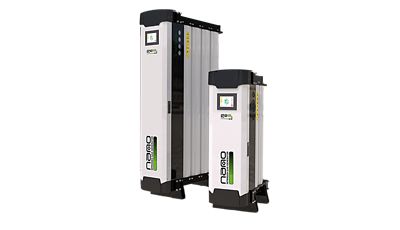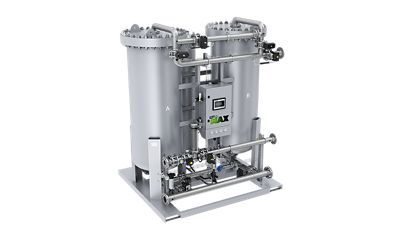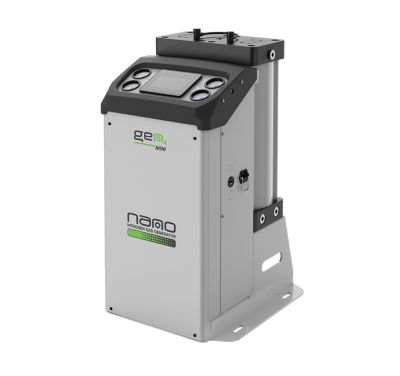When it comes to pipeline safety and operational reliability, few procedures are as critical, yet as overlooked as purging. Whether it’s for commissioning a new pipeline, conducting routine maintenance, or preparing for decommissioning, the risks of residual oxygen and combustible gases can’t be understated.
In industries where flammable gases or volatile compounds move through pipelines daily, such as oil and gas, petrochemicals, refineries, and process manufacturing, a single spark in an improperly purged line can lead to catastrophic results. That’s why nitrogen remains the industry’s go-to purging gas. In this article, we’ll break down what pipeline purging is, why it’s done, how nitrogen does the job better than any other gas, and what a standard purging process looks like in practice.
If you’re planning a pipeline project or simply want to ensure you’re meeting safety, efficiency, and regulatory standard, here’s what you need to know.
Why Pipelines Need Purging
Pipelines don’t run in a vacuum. Every pipeline contains residual air, moisture, and often traces of gases from previous operations. If oxygen or combustible gases remain in the line during commissioning or maintenance, they pose two significant risks: oxidation and combustion.
Oxidation can corrode pipeline interiors, leading to contamination, product quality issues, and eventual leaks or system failures. Combustion, of course, is the greater immediate hazard, a flammable gas mixture can ignite with a single spark, endangering workers, equipment, and entire facilities.
For these reasons, industry regulations and internal safety standards universally mandate purging pipelines with an inert gas before any operation that opens or exposes the system. This ensures that oxygen and any volatile gases are safely displaced, creating an inert environment ready for safe work or startup.
Why Nitrogen is the Industry Standard
Of all the inert gases available, nitrogen checks every box for pipeline purging and does so cost-effectively.
1. It’s Inert and Non-Flammable
Nitrogen is chemically stable and inert under normal operating conditions. It doesn’t react with pipeline materials or the transported product, and it won’t combust or sustain a flame.
2. It’s Abundant and Cost-Effective
Nitrogen makes up 78% of the air we breathe, which means it’s readily available. Unlike argon or helium, which can be costly and limited in supply, nitrogen is simple and affordable to source, store, or generate on-site.
3. It’s Dry
Moisture is the enemy of many pipeline systems, particularly in oil and gas or chemical processing. Nitrogen is dry by nature, which means it also prevents moisture-related corrosion during purging.
4. It’s Easy to Produce On-Site
Modern nitrogen gas generators allow facilities to produce nitrogen exactly when and where they need it. No more hauling in bulky cylinders or paying for third-party bulk deliveries, on-site generation ensures a steady, cost-efficient supply with minimal logistical headaches.
For companies concerned with long-term operational costs, on-site nitrogen generation has proven to deliver a fast return on investment while enhancing both process control and safety.
A Typical Pipeline Purging Process: Step by Step
While every pipeline is unique in length, diameter, transported product, operating conditions, the basic steps for safe and effective nitrogen purging remain the same. Here’s how a typical purging process unfolds:
1. Preparation
Good purging starts with good planning.
Inspection: Inspect the pipeline section to be purged. Verify isolation points, valves, and that all equipment is properly rated for the expected pressures and flows.
Identify Entry and Exit Points: Determine where nitrogen will be introduced and where displaced gases will exit. Positioning matters, the goal is to push the unwanted gases out as efficiently as possible.
2. Nitrogen Inerting / Displacement
With the line isolated and your nitrogen supply ready, the purge begins:
Introduce Nitrogen at Controlled Flow Rates: Nitrogen is fed into the pipeline at a flow rate calculated to ensure complete displacement without creating turbulence that could cause mixing.
Monitor Progress: Use gas analyzers to monitor oxygen and hydrocarbon levels at the outlet point. The goal is a progressive sweep that pushes out air or flammable gases in front of the nitrogen front.
Maintain Positive Pressure: Keeping a slight positive pressure inside the line prevents air from re-entering as purged gases exit.
3. Verification
Purging isn’t complete until you know it’s complete.
Measure Residual Oxygen and Hydrocarbons: Industry standards often require residual oxygen levels to drop below 1%, sometimes even lower for highly sensitive processes.
Document Results: Verification and documentation are essential for compliance and internal safety audits.
4. Commissioning or Maintenance
Once the line is verified inert:
Safe Work or Startup: The pipeline is now safe for maintenance crews to work inside or for operators to introduce product without fear of combustion or contamination.
Re-Purge if Necessary: If the system is opened again during maintenance, a repeat purge may be required to maintain safe conditions.
Best Practices for Effective Purging
Pipeline purging is straightforward in theory but demands discipline in practice. A few proven best practices ensure purging is done safely and cost-effectively every time.
Use High-Purity Nitrogen Where Needed
For pipelines carrying highly reactive or sensitive products, higher purity nitrogen (up to 99.999%) may be needed to meet strict contamination limits. On-site nitrogen generators allow facilities to dial in the right purity level without overpaying for bulk gas deliveries.
Control Flow Rates and Pressure
Turbulence is the enemy of effective purging. Keep flow rates within calculated parameters to ensure smooth displacement rather than chaotic mixing. Likewise, maintain proper pressure to prevent air ingress.
Validate with Reliable Instruments
Invest in accurate gas analyzers and oxygen detectors. Visual guesswork is not an option when safety and compliance are on the line.
Consider On-Site Generation for Maximum ROI
Purchasing nitrogen cylinders or arranging bulk liquid deliveries works, but over time, the costs add up. Many facilities now choose on-site nitrogen generation, which not only saves money but also removes the logistical headaches of storage, delivery scheduling, and supply chain delays.
How nano-purification solutions Supports Safe Pipeline Purging
At nano-purification solutions, we understand that pipeline integrity is non-negotiable. Downtime, contamination, or safety incidents aren’t just line items on a balance sheet; they’re reputational risks no operation can afford.
Our nitrogen generation systems are designed for the demands of oil and gas, petrochemical, and industrial applications where pipeline purging is routine. From modular PSA nitrogen generators to high-capacity membrane systems, we provide solutions that deliver reliable, high-purity nitrogen at the flow rates you need on demand.
But it’s not just about the generators. Effective purging also depends on clean, dry compressed air upstream. Our compressed air filtration and dryer technologies ensure the feed air is free from contaminants that could compromise nitrogen purity or pipeline conditions.
Backed by local service partners, technical expertise, and a commitment to your success, nano-purification solutions delivers more than equipment, we deliver confidence that your pipelines stay safe, compliant, and efficient, year after year.
Ready to Purge Smarter?
Pipeline purging isn’t optional, but paying too much for nitrogen, risking contamination, or compromising safety standards is. If you’re ready to see what on-site nitrogen generation can do for your operation, let’s talk.
Connect with our nano Nitrogen Team
Connect with our team today to size a system that matches your pipeline demands, your purity requirements, and your budget. Whether you’re purging once a year or once a week, we’re here to help you do it safely and do it right. Contact nano-purification solutions today to learn more about our nitrogen gas generators, air treatment solutions, and expert service support.
Experience. Customer. Service. It’s not just our tagline. It’s our commitment.





